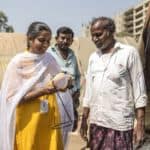The Latest in Impact Investing in Latin America: Recent Data Shows Dynamic Growth – And New Challenges
Latin America has been making global headlines, though often for negative reasons—divisive election campaigns in Brazil and Mexico, worries over Argentinean debt and coverage of Central American migrants. But, there’s another development that’s been building up under the radar: the growth of impact investing in the region. The Aspen Network of Development Entrepreneurs (ANDE) recently launched the second edition of “The Impact Investing Landscape in Latin America” — the biannual survey that we conduct with LAVCA (The Association for Private Capital Investment in Latin America)—which analyzed information provided by 67 organizations active in impact investing in the region.[i]
Following the sector closely both here in Brazil and across the wider region, we had anecdotal evidence that impact investing was growing: A government-backed national strategy was approved in late 2017, for example, while the third edition of the Social Finance Forum in Brazil – a bellwether for the growth of impact investing in the country – attracted over 1,000 participants. And in our ongoing conversations with traditional VC fund managers, corporate foundations and family offices, we hear increasing willingness to get involved in impact investing, as the primary question has evolved from “why” to “how.” We were curious to find out whether—against the backdrop of challenging economic and political headwinds across the region—the data would back up our gut feeling that impact investing was indeed gaining momentum. The good news is, that does indeed seem to be the case.
A Growing Industry
Investors that answered our survey reported US $4.7 billion in assets under management allocated specifically for investments in impact businesses in Latin America. They collectively deployed US $1.4 billion in 860 deals throughout 2016 and 2017. When analyzing a sub-sample of investors that responded to both editions of the survey, we can observe that investors based in the region more than doubled their capital invested, from US $95 million to US $193 million.
According to the data, six investors made their first impact investments in the region between 2016 and 2017, and new countries like Argentina were listed among the most active in the local industry. These results reveal a dynamic industry where the pieces are always moving. In terms of the most commonly invested sectors, microfinance and agriculture continue to appear at the top. But compared to our 2014/2015 survey, healthcare was replaced by information and communication technology (ICT) as the third most-invested sector in the latest survey.
While not fully conclusive, the data also suggest that impact investing deals may be shifting increasingly into the scale and growth stage, at the expense of earlier stages. This is an important trend to keep an eye on, as investment at the seed and early stages is essential to ensuring a vibrant and sustainable pipeline of investment opportunities further down the line as well as encouraging innovative ideas to flourish.
When observing country-specific data, we can see some changes when compared to our previous survey. Although we are cautious about our conclusions about growth, as the two sample sets differ slightly, we can rank some activities for some countries in the region. Looking at where ANDE is active and able to collect specific data, the biggest player was Mexico with 23 active investors that deployed US $169 million in 108 deals. Brazil came in second with 29 active investors investing US $131 million in 69 deals. Colombia saw 14 active investors deploying US $86 million invested in 42 deals, and the Central America region had 11 active investors and US $392 million invested in 198 deals. As various countries in Latin America have faced different degrees of economic and political instability in recent years, the fact that the industry is registering growth in so many locations is positive.
The sector also reported 27 exits between 2016 and 2017, with financial inclusion registering most of the revenues on exits—which makes sense, as it was the top priority sector during the 2014 and 2015 period. Brazil reported exits for the first time, totaling eight between 2016 and 2017, with most being debt repayment.
Challenges and Recommendations
The investors in the survey reported both the “availability of capital” and “appropriate investment vehicles to deploy capital” as the main challenges for the industry in the region. This represents a shift from the previous edition, where participants reported “investment-ready deals” and “achieving financial and social returns” as the main challenges for the sector. The change in investors’ perspectives about the industry’s main challenges is another indication of its growth, and the need for continuous innovation as the market becomes more sophisticated. Through the end of 2019, investors expect to raise up to US $2 billion and invest around US $1.7 billion, and they’re anticipating more deals than the current period. The main targeted sectors for these investors are financial inclusion and agriculture.
Based on the data, we can draw some recommendations to support the ongoing mainstreaming of the impact investing sector in the region. One way to advance this goal is to continue to increase dialogue with the philanthropic sector to help unlock more capital, especially for entrepreneurs in the incubation and early-stage periods. Promoting cases and data about the sector to traditional investors will also hopefully attract investments from new entrants. And increasing the testing of new financial vehicles to facilitate capital allocation in the sector is another supportive measure. Finally, impact measurement remains a continuous challenge for investors; we recommend sharing metrics tools and best practices to increase cost-efficiency measurement within this industry.
If you are interested in learning more about the impact investing industry in the region, we have more data available. In addition to the regional report, we recently published a specific analysis about Brazil, and we are also producing deep dives about four sectors: education, healthcare, financial inclusion and biodiversity conservation. The last two reports were published in October, and the other two will be launched over the next few months and will be available on ANDE’s website.
[i] For purposes of this research we considered as an impact investor firms that (1) make direct investments in companies and/or projects, (2) have positive social or environmental impact as an explicit objective, (3) have an expectation of a financial return, and (4) invest using any instrument, including debt, equity, quasi equity, guarantees or others.
Rebeca Rocha is Head of the ANDE Brazil Chapter.
Photo courtesy of USAID’s Development Credit Authority.
- Categories
- Investing



